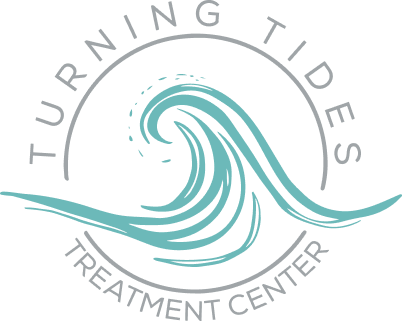Alcohol Withdrawal Timeline
Navigating the turbulent waters of alcohol withdrawal is a cornerstone in the journey towards sobriety. For many, this path unveils a series of physical and psychological challenges, underscoring a crucial phase of reclamation of one’s health and well-being. In embarking on this journey, knowledge becomes power—the power to anticipate, understand, and prepare for the road ahead. This article aims to dissect the alcohol withdrawal timeline meticulously, providing a beacon of understanding through the uncertainty surrounding the withdrawal process. Through this exploration, we endeavor to illuminate the steps of this journey, offering solace and guidance to those who walk the path toward recovery.
Understanding Alcohol Withdrawal Syndrome
What is Alcohol Withdrawal?
At the heart of alcohol withdrawal lies a physiological outcry, a response from the body and mind to the sudden absence of alcohol—a substance it has come to rely on through patterns of binge drinking alcohol and heavy alcohol intake. Alcohol withdrawal is not merely a series of symptoms but a stark reflection of the body’s struggle to find equilibrium after being unmoored from the sedative effects of alcohol consumption. It’s a testament to the profound impact that alcohol has on the brain’s chemical landscape, an impact that, once withdrawn, leaves waves of imbalance in its wake.
Causes of Alcohol Withdrawal
The genesis of alcohol withdrawal is deeply rooted in the brain’s neuroplasticity—its ability to adapt and change in response to prolonged exposure to alcohol. Alcohol acts as a depressant, dampening the nervous system, and with time, the brain adjusts its chemistry to counterbalance this effect. This adaptation, while beneficial in the presence of alcohol, becomes a source of profound discomfort when alcohol is removed. It’s akin to removing a set of weights the brain has been counterbalancing, leaving it to recalibrate under new, alcohol-free conditions.
Alcohol Withdrawal Timeline Breakdown
First 24 Hours: Early Symptoms
The journey through alcohol withdrawal begins within the first 24 hours after the last drink, marking a period of acute bodily and psychological adjustment. In these initial hours, individuals may start to experience a constellation of symptoms signaling the onset of withdrawal. Anxiety, often described as a sense of dread or unease, emerges as a common symptom, reflecting the central nervous system’s response to the absence of alcohol. This anxiety is accompanied by physical tremors, particularly noticeable in the hands, as the body struggles to recalibrate its baseline state of relaxation without alcohol’s depressant effects.
Sleep disturbances, including insomnia, are common, as the individual may find it challenging to fall asleep or stay asleep without the sedative effects of alcohol. This lack of restorative sleep exacerbates feelings of discomfort and anxiety. Gastrointestinal distress, manifested as nausea and abdominal pain, also marks these early hours, reflecting the direct impact of alcohol withdrawal on the digestive system.
These symptoms, while individually manageable, collectively signify the body’s dependence on alcohol and its profound struggle to adapt to a sudden absence. The first 24 hours are a critical window, where the severity of these early symptoms can often provide insight into the overall intensity of the withdrawal process that lies ahead.
24-48 Hours: Peak Symptoms
As individuals progress into the 24 to 48-hour window of alcohol withdrawal, the symptoms experienced in the first day often intensify, reaching what can be described as the peak of the withdrawal experience. This period is characterized by an escalation in both the severity and the variety of symptoms, painting a vivid picture of the body’s acute response to the lack of alcohol.
Elevated heart rate and increased blood pressure become more pronounced, reflecting the cardiovascular system’s response to withdrawal. These symptoms can lead to a feeling of palpitations or the unsettling sensation of one’s heart racing, which may exacerbate feelings of anxiety and discomfort. Body temperature regulation issues may also arise, with individuals experiencing sweats or chills as the body attempts to maintain a stable internal environment.
Hallucinations, although less common, can occur during this peak period, manifesting as visual, auditory, or tactile experiences that have no basis in reality. These hallucinations can be particularly distressing, adding to the psychological burden of withdrawal. It’s during this phase that the need for medical supervision becomes increasingly apparent, as the intensity of symptoms can pose significant health risks.
48-72 Hours: Delirium Tremens
Delirium Tremens (DTs) represent the zenith of potential danger in the alcohol withdrawal timeline, occurring in a small percentage of individuals undergoing withdrawal. This severe form of alcohol withdrawal is characterized by severe confusion, disorientation, and agitation, coupled with hallucinations and illusions that intensify the individual’s distress. Fever, withdrawal seizures, and severe tremors also hallmark DTs, signaling a critical need for immediate medical intervention.
The onset of DTs typically occurs between 48 to 72 hours after the last drink, but it can be delayed up to a week in some cases, making continuous medical monitoring essential during this period. The development of DTs is a medical emergency due to the high risk of life-threatening outcomes if not properly managed. Treatment often involves sedation, hydration, and close monitoring of vital signs to stabilize the individual’s condition.
After 72 Hours: Subsiding Symptoms
Moving past the 72-hour mark, many individuals begin to notice a gradual subsidence of the acute symptoms of alcohol withdrawal. While the most severe physical symptoms tend to diminish, this phase is not devoid of challenges. Psychological and emotional symptoms, such as anxiety, depression, and irritability, may persist, reflecting the ongoing neurological adjustments in the absence of alcohol.
Some individuals may experience what is known as Post-Acute Withdrawal Syndrome (PAWS), characterized by lingering symptoms that can last for weeks or even months. These symptoms can include mood swings, sleep disturbances, reduced energy levels, and ongoing cravings for alcohol. PAWS represents the body’s continued adjustment to sobriety and can fluctuate in intensity, often triggered by stress or environmental factors.
The period after 72 hours marks the beginning of the longer-term recovery process, emphasizing the importance of continued support, whether through medical intervention, therapy, or support groups. This phase underscores the transition from acute withdrawal to the broader journey of recovery, highlighting the need for comprehensive strategies to manage lingering symptoms and prevent relapse.

Managing Alcohol Withdrawal
Home Remedies
For mild symptoms, home remedies such as staying hydrated, eating a balanced diet, engaging in light exercise, and practicing relaxation techniques can be beneficial. However, these measures are not a substitute for professional medical advice.
Medical Treatments
In cases of moderate to severe withdrawal symptoms, medical treatment may be necessary. Benzodiazepines are commonly prescribed to manage anxiety, seizures, and insomnia. In some cases, medication to reduce cravings and stabilize mood may also be recommended.
Therapy and Support Groups
Therapy and participation in support groups like Alcoholics Anonymous (AA) or SMART Recovery can offer invaluable psychological support, coping strategies, and a sense of community during and after the withdrawal phase. These resources can significantly impact an individual’s ability to achieve and maintain sobriety.
Preventing Relapse
Strategies for Long-term Sobriety
Achieving long-term sobriety requires a comprehensive strategy that includes continuing therapy, engaging in sober activities, developing new hobbies and interests, and possibly making lifestyle changes. Building a strong support system and learning to manage triggers and stress without alcohol are also crucial components of preventing relapse.
Importance of a Support System
A robust support system, including family, friends, therapists, and support groups, can provide the emotional support, accountability, and encouragement needed to navigate the challenges of recovery. Having people to turn to during moments of weakness or doubt can make a significant difference in preventing relapse.
FAQs
The safest alcohol detox is one under medical supervision, either in a hospital or a specialized detox facility. This ensures that withdrawal symptoms are carefully monitored and managed by a medical professional to prevent complications.
Yes, in severe cases, withdrawalway symptoms such as delirium tremens (DTs) can be fatal if not treated promptly. This underscores the importance of seeking immediate medical attention for alcohol withdrawal.
The recovery process from alcohol dependency or alcohol use disorder is highly individual and the recovery time frame can vary widely. While physical health problems and symptoms may subside within a few weeks, psychological and emotional recovery can take months or even years. Ongoing support and addiction treatment options are often necessary for sustained recovery from an alcohol addiction or substance use disorder.
Withdrawal symptoms typically occur in individuals with a history of prolonged heavy drinking or alcohol abuse. One night of heavy drinking may lead to a hangover, but it is unlikely to cause true withdrawal symptoms.
Signs that medical help is needed include severe agitation, confusion, hallucinations, seizures, high fever, or any symptoms of delirium tremens. Additionally, individuals with a history of severe withdrawal symptoms or underlying health conditions should seek medical advice before attempting to quit.
Overcome Alcohol Addiction at Turning Tides Treatment Center
Navigating the alcohol withdrawal timeline is a critical first step toward recovery and sobriety. While the journey can be fraught with challenges, understanding the process, symptoms, and available resources can empower individuals to take control of their recovery. Remember, withdrawal is temporary, and with the right support and strategies, a healthier, alcohol-free life is within reach.
If you or a loved one are struggling with alcohol addiction, get in touch with Turning Tides Treatment Center. Our Detoxification programs and addiction treatment programs are designed to help individuals overcome addiction through evidence-based therapies. Learn more about our medical detox process and alcohol rehab today.
Clinically Reviewed by:

Matthew is a licensed marriage and family therapist and clinical supervisor in Orange County, California. Matthew has an extensive history working with the substance abuse and mental health population and is committed to client care with an ethical approach to treatment. Matthew utilizes a solution-focused, cognitive behavioral approach to therapy. He emphasizes the importance of creating a recovery environment which supports deep and meaningful sober connection, a system of accountability, daily structure and healthy routine, and an aftercare plan which will support continued sobriety post-treatment.
